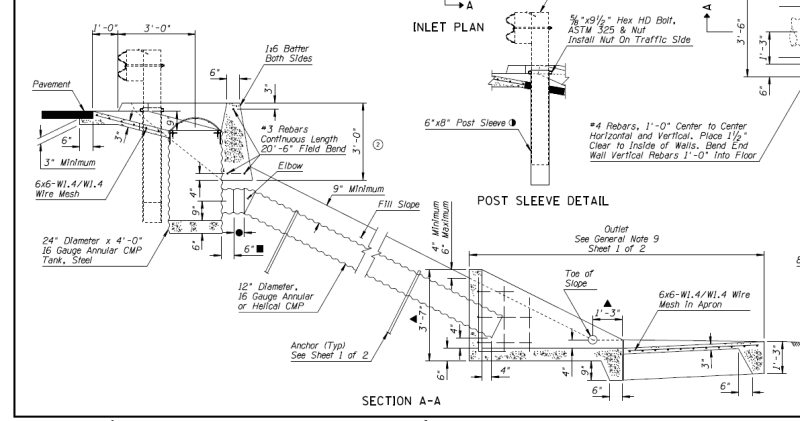khu
Civil/Environmental
- Aug 8, 2019
- 25
I'm being asked to design a culvert being installed at a pretty aggressive site. The channel in which the culvert will be placed is upwards of 20%. It looks like in the vicinity of the culvert, a ~17% slope in the culvert would work with the channel slope.
I'm having a hard time finding guidance for maximum pipe slope for CSP in the 48" diameter range. I've seen a lot of jurisdictions require slope anchoring at 20% or greater, but does the size of pipe play into that?
I'm having a hard time finding guidance for maximum pipe slope for CSP in the 48" diameter range. I've seen a lot of jurisdictions require slope anchoring at 20% or greater, but does the size of pipe play into that?



![[smile] [smile] [smile]](/data/assets/smilies/smile.gif) ). Since this culvert will be under a road and you are close to a 20% slope, you may want to be conservative and install a couple/a few anchors regardless of the requirements.
). Since this culvert will be under a road and you are close to a 20% slope, you may want to be conservative and install a couple/a few anchors regardless of the requirements.